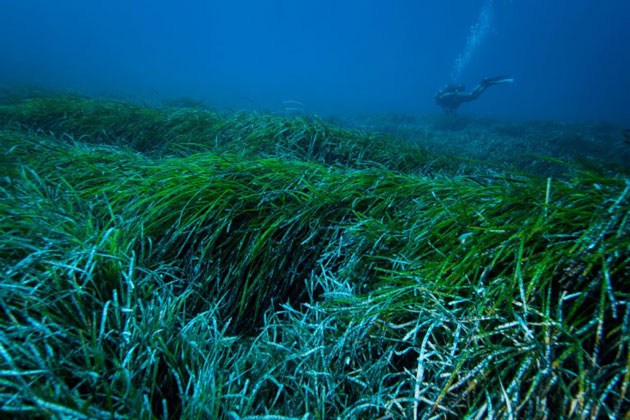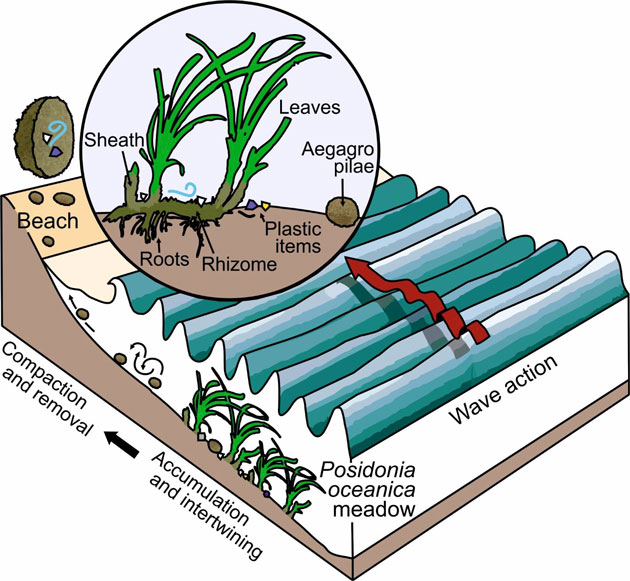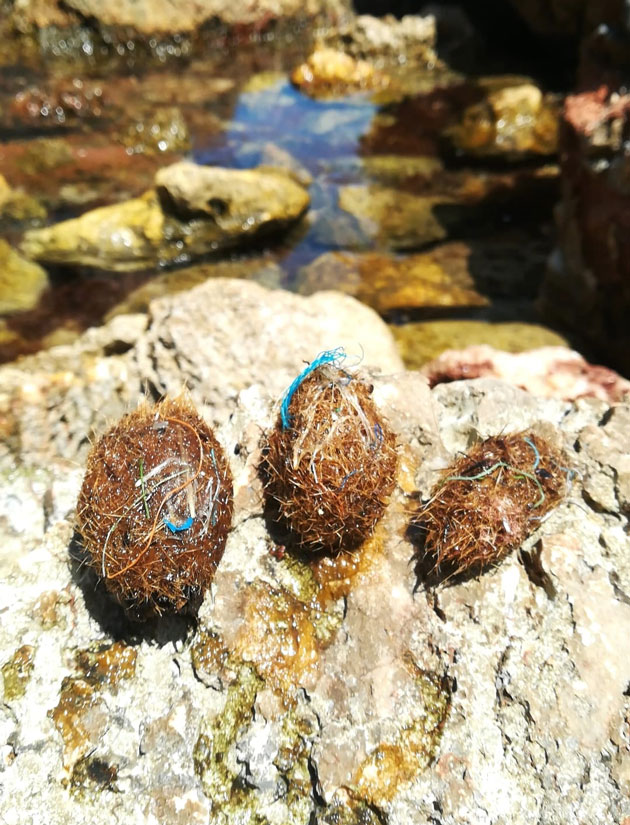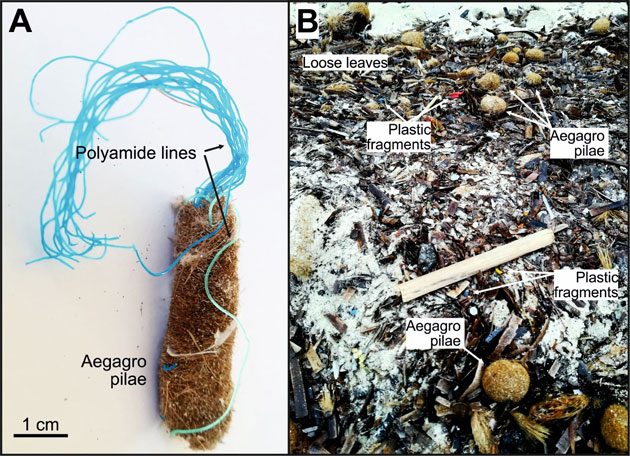This Mediterranean seagrass filters plastic waste — but it’s also under threat

- Posidonia oceanica, a species of seagrass that grows in meadows in the Mediterranean Sea, has been found to trap plastic waste particles at much higher concentrations than previously thought.
- Researchers in Spain found that balled-up clumps of this fibrous plant were trapping up to 1,500 plastic particles per kilogram of seagrass.
- They estimate that the total extent of P. oceanica may be capable of trapping nearly 900 million pieces of plastic debris each year.
- However, the seagrass meadows are receding across their range, due to threats from climate change, the spread of invasive species, pollution, erosion, and loss of coastal habitats from dredging, trawling and boat anchoring.
Underwater meadows of a seagrass endemic to the Mediterranean appear to trap some plastic debris that would otherwise drift out into the open ocean and pollute the bottom of the sea, a recent study has found.
The seagrass Posidonia oceanica forms lush, extensive meadows in the Mediterranean’s temperate waters at depths down to 40 meters (130 feet). When sampling clusters of these plants from different beaches on the Spanish island of Mallorca in 2018 and 2019, researchers from the University of Barcelona found that they formed natural bundles of fiber. These are known as “Neptune balls” — and they can catch items of plastic waste.


Thanks to its long, ribbon-like leaves, P. oceanica may trap nearly 900 million pieces of plastic debris each year, and all without human intervention, the researchers wrote in a study published Jan. 14 in the journal Scientific Reports.
They found plastic debris in half of the loose seagrass samples, at up to 600 plastic pieces per kilogram of leaves. In addition, 17% of the Neptune balls contained plastic, but at a much higher density — nearly 1,500 pieces per kilogram of seaball.
“We knew that seaballs were trapping plastics but what we didn’t expect were such high concentrations per kilogram of natural fibers,” lead author Anna Sanchez-Vidal, a marine biologist at the University of Barcelona, told Mongabay in an email.
“Research on microplastic pollution has long focused on sea surface and deep sea accumulations,” she added, “but there is a growing body of evidence that coastal sea ecosystems may play an important role by stranding and capturing plastics on their way offshore.”
This isn’t the first finding that highlights the pollution-filtering function of coastal seagrasses. In February 2020, a group of scientists from China led by Yuzhou Huang published a study in the journal Science Direct showing that another seagrass species, Enhalus acodoides, does something similar. Beds of the seagrass off the coast of Hainan province in southern China were found to trap microplastics at a rate of 80 to 884 particles per kilogram.

In Mallorca, these plastic-trapping Neptune balls get washed ashore during storm conditions, which are most frequent in autumn and winter. When the sea is calm, the seaballs remain on the seafloor, the researchers found.
What’s not clear at this point, they note, is whether acting as a natural filter for plastic damages the seagrass itself.
“Our understanding of the plastic fluxes is still incomplete,” Sanchez-Vidal said, adding that further studies are needed into this question.
The study’s findings add to the importance of global seagrass conservation for ocean and coastal ecosystems. These plants are known to improve water quality, serve as a carbon dioxide sink, and act as a natural nursery and refuge for fish.
Climate change, the spread of invasive species, pollution, erosion, and loss of coastal habitats from dredging, trawling and boat anchoring all pose a threat to seagrass meadows across the world. P. oceanica, for instance, is estimated to have lost up to 50% of its potential initial area since 1960. The latest estimate puts the total extent of P. oceanica meadows at 1.2 million hectares (3 million acres).
But even as the meadows shrink, the amount of plastic waste flowing into the Mediterranean continues to grow. The summer holiday season in Europe, when visitors flock to the seaside, results in around 150 million metric tons of plastic ending up in the Mediterranean in a matter of just a few weeks over the holiday season, according to WWF in 2018.
“Given the ever-increasing plastic load reaching our oceans, seagrass ecosystems such as P. oceanica meadows will play a crucial role,” Sanchez-Vidal said.

Citations:
Sanchez-Vidal, A., Canals, M., de Haan, W. P., Romero, J., & Veny, M. (2021). Seagrasses provide a novel ecosystem service by trapping marine plastics. Scientific Reports, 11(1), 254. doi:10.1038/s41598-020-79370-3
Huang, Y., Xiao, X., Xu, C., Perianen, Y. D., Hu, J., & Holmer, M. (2020). Seagrass beds acting as a trap of microplastics — Emerging hotspot in the coastal region? Environmental Pollution, 257, 113450. doi:10.1016/j.envpol.2019.113450
This article first appeared on Mongabay.







